|
|
Fungi
Nov 16, 2015 17:41:18 GMT
Post by fungiphile on Nov 16, 2015 17:41:18 GMT
Paxillus involutus - Brown Rollrim, very common, these are collected by eastern Europeans for eating, but it is now thought to be very poisionous over a long period which can end in death  |
|
|
|
Fungi
Nov 16, 2015 17:44:13 GMT
Post by fungiphile on Nov 16, 2015 17:44:13 GMT
hard to tell without a picture of the gills etc, but it could be either a Cortinarius species, or a lepista (Blewitt) species |
|
|
|
Fungi
Nov 16, 2015 17:47:32 GMT
Post by Rosefriend on Nov 16, 2015 17:47:32 GMT
Hi fungiphile, and welcome to GWD....pleased that there is someone in the "know" regarding Fungi...so many wild and wonderful ones... Preview should work without any problems fungiphile, - you can possibly click on BBCode and then back to Preview a couple of times, - that may sort it out, have done that myself before now..let me know if you are successful and I will ask on Proboards if not... |
|
|
|
Fungi
Nov 16, 2015 17:59:27 GMT
Post by fungiphile on Nov 16, 2015 17:59:27 GMT
Been on a little foray this morning - surprises galore (though not all nice ones!) x Tig Ickle ones 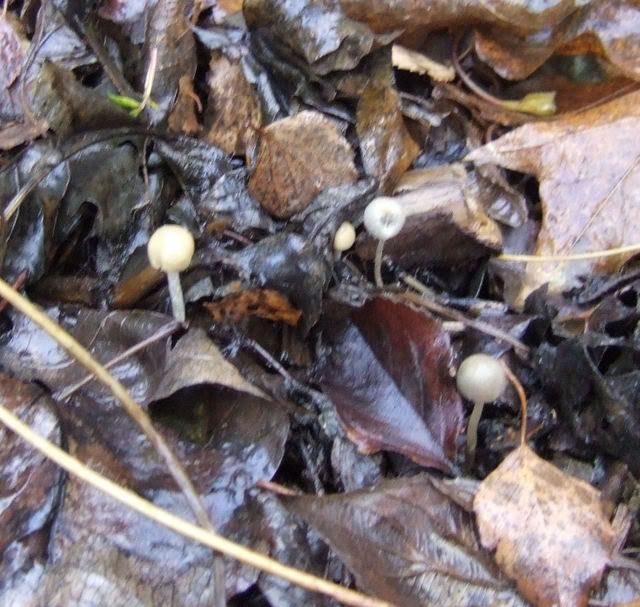 Medium sized ones 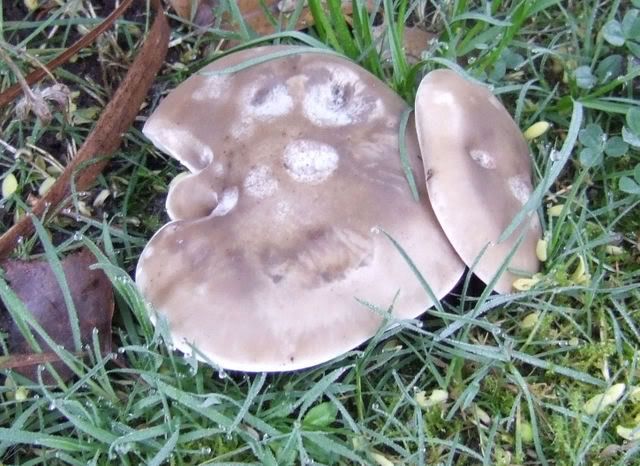 And this blooming great thing growing on the top of the apple tree!!! 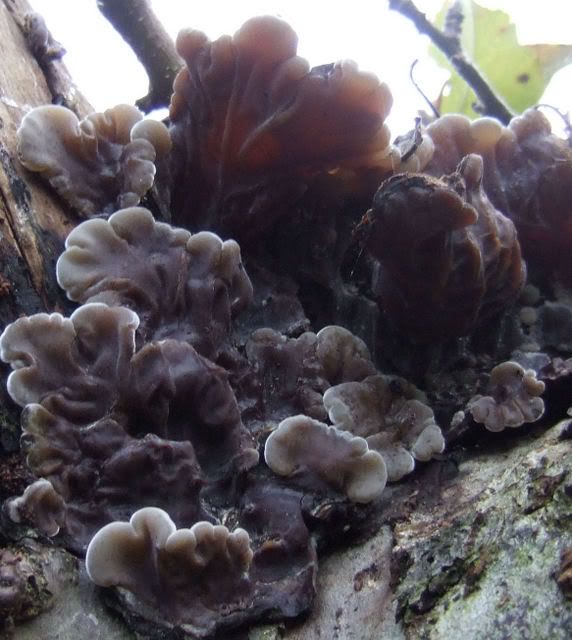 no1/ could be a Psathyrell species ? no2/ looks like the field Blewit - Lepista saeva, but hard to say without seeing the gills and stem of it no3/ is the Tripe fungus - Auricula mesenterica, (related to Auricula uaricula-judae - Jelly Ear fungus) |
|
|
|
Fungi
Nov 16, 2015 18:05:16 GMT
Post by fungiphile on Nov 16, 2015 18:05:16 GMT
Hi fungiphile, and welcome to GWD....pleased that there is someone in the "know" regarding Fungi...so many wild and wonderful ones... Preview should work without any problems fungiphile, - you can possibly click on BBCode and then back to Preview a couple of times, - that may sort it out, have done that myself before now..let me know if you are successful and I will ask on Proboards if not... hi Rosefriend, and thanks for the welcome  err, i'm not having a problem with the preview, it was the original poster that posted that, i just got my reply in the wrong place, think i've figured it out now though  |
|
|
|
Fungi
Nov 16, 2015 21:07:09 GMT
Post by fungiphile on Nov 16, 2015 21:07:09 GMT
Anyone know what these are that appeared on 31st October in my lawn? They weren't too far from the trunk of an aged Rowan. I'm wondering if it is a part of it's dying process  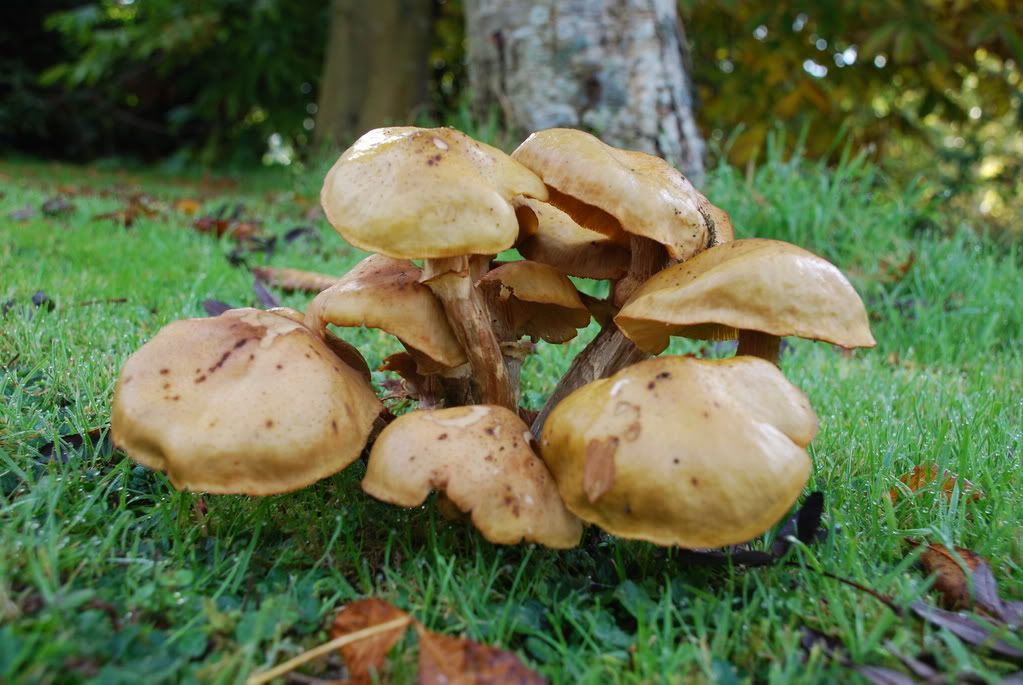  Thirded! ;D i'm afraid it's one of the Honey Fungus species, possibly Armillaria mellea, if your tree is showing signs of ill health, then this is your culprit ! it may already be to late for your Rowan tree, and any other trees or shrubs you may have in your garden, it has already claimed 3 buddlias and two Birches in my garden plus half of my Privet hedge  not only does it spread by releasing it spores, but by underground rhizomes called bootlaces, that can spread over large distances, (see this link) link |
|
|
|
Fungi
Nov 16, 2015 21:10:49 GMT
Post by fungiphile on Nov 16, 2015 21:10:49 GMT
 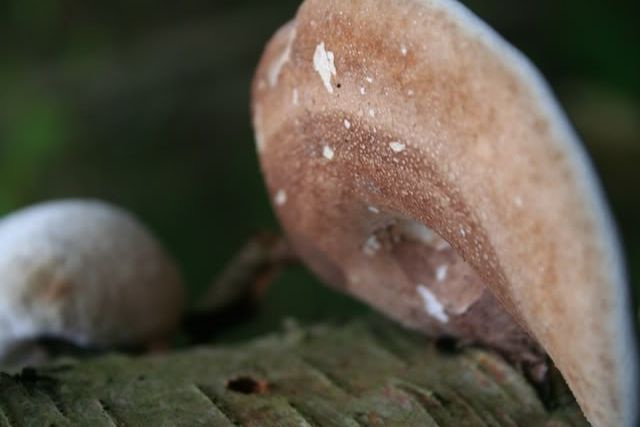 heres my mushies from back in november Honey fungus - Armillaria species (probably Armillaria mellea) for the first and the Birch Polypore - p iptoporus betulinus, found exclusively on Birch Trees. |
|
|
|
Fungi
Nov 16, 2015 21:13:25 GMT
Post by fungiphile on Nov 16, 2015 21:13:25 GMT
Wasn't really expecting to see much mushroomy-stuff at this time of year, but in a damp and tangley chestnut wood... 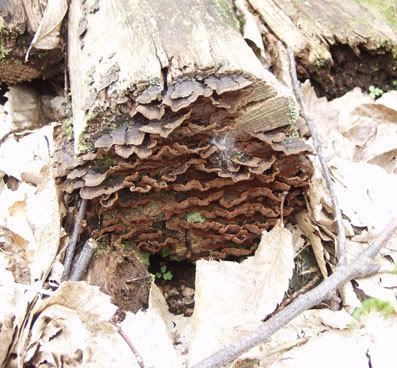 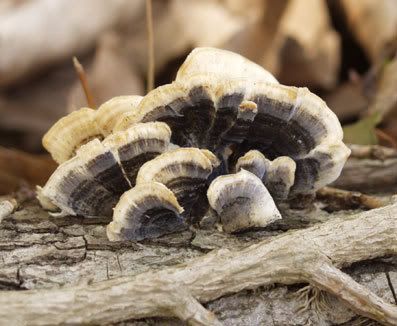 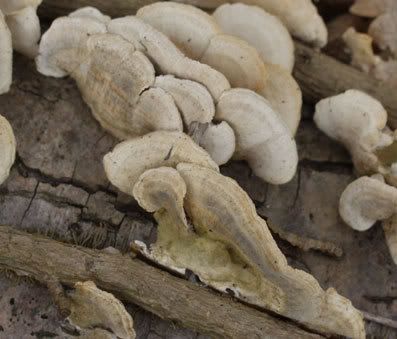 OM not too sure about no1 but the others are Turkey tail - Trametes versicolor, which is vary variable in appearence, and comes in a mixture of colours. |
|
|
|
Fungi
Nov 16, 2015 21:17:09 GMT
Post by fungiphile on Nov 16, 2015 21:17:09 GMT
Lovely pics OM amazing what you find when you start looking. I found these this morning growing on the side of a loo roll that has sweetpeas in   one of the coprinopsis species (formerly Coprinus) possibly Coprinopsis lagopides or similar |
|
|
|
Fungi
Nov 16, 2015 21:19:29 GMT
Post by fungiphile on Nov 16, 2015 21:19:29 GMT
Found this beauty this morning. It's pretty big too. 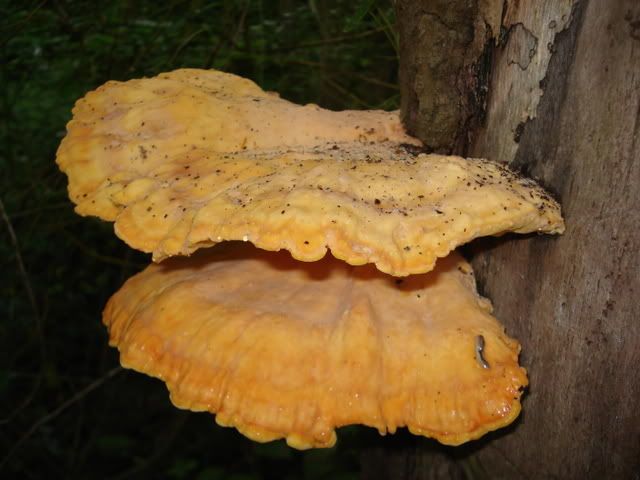 these are the "Chicken of the woods" - Laetiporus sulphureus, just begining to age, |
|
|
|
Fungi
Nov 16, 2015 21:22:25 GMT
Post by fungiphile on Nov 16, 2015 21:22:25 GMT
Here's some I found while on holiday in Cumbria......... 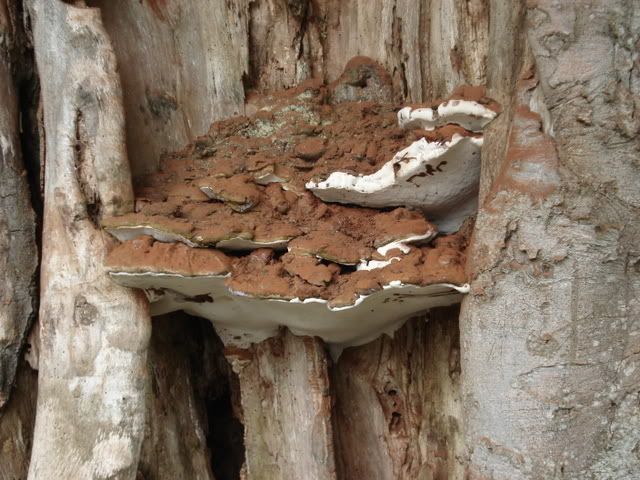  no1 is a Ganoderma species, which is usually found on Beech trees, both live and dead, probably Ganoderma australe or Ganoderna applanatum. no2 is Turkey Tail - Trametes versicolour |
|
|
|
Fungi
Nov 16, 2015 21:25:04 GMT
Post by fungiphile on Nov 16, 2015 21:25:04 GMT
Saw this on a venerable apple tree... ain't it a beauty: 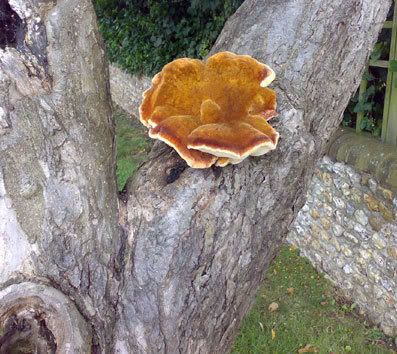 OM. this could be Inonotus hispidus - Shaggy Bracket, commomly found on old apple trees, but more usually on Ash, |
|
|
|
Fungi
Nov 16, 2015 21:28:13 GMT
Post by fungiphile on Nov 16, 2015 21:28:13 GMT
I just thought it looked rather nice.. 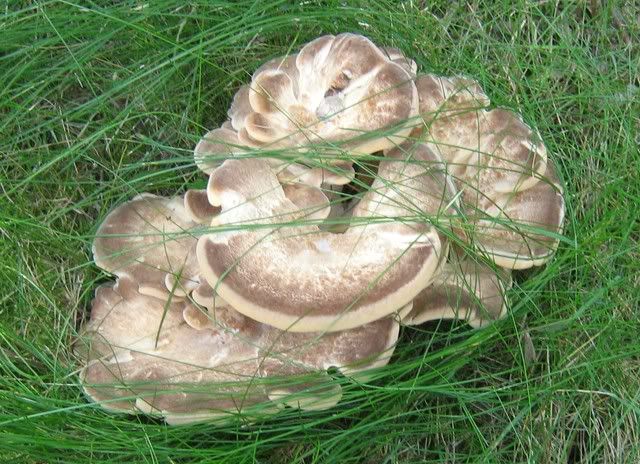 RF could be Grifola frondosa - hen of the woods ? |
|
|
|
Fungi
Nov 16, 2015 21:30:49 GMT
Post by fungiphile on Nov 16, 2015 21:30:49 GMT
Just stumbled on this thread, there are some really beautiful photos on here. I have put this picture on my North Devon/Cornwall 2008 thread under holidays, but thought I would add it here as well. I have no idea what sort of fungi it is, but it was growing on a cliff top just off the footpath between Widemouth Bay and Bude. 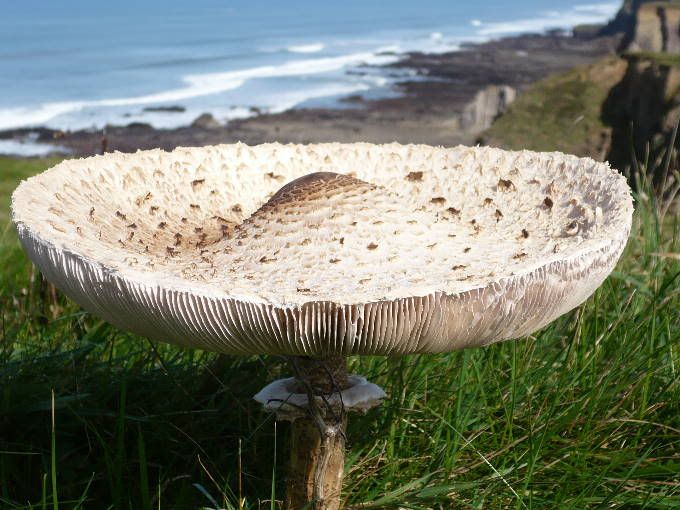 Parasol mushroom - Macrolepiota procera, always an impressive sight  |
|
|
|
Fungi
Nov 16, 2015 21:32:25 GMT
Post by fungiphile on Nov 16, 2015 21:32:25 GMT
Has anyone an idea what these could be... I found them this afternoon but I can't see them in my book... 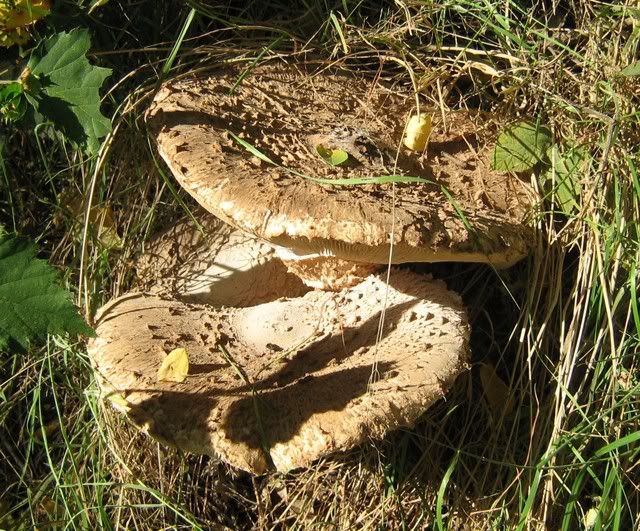 RF the Shaggy Parasol - Macrolepiota rhacodes, |
|
|
|
Fungi
Nov 16, 2015 21:39:20 GMT
Post by fungiphile on Nov 16, 2015 21:39:20 GMT
A couple of weeks ago now I took out the stump of a shrub I'd previously cut down, can't even remember what the shrub was now  Anyhow I spotted some small orange fungi growing on it and thought I must take a pic of those. Well a couple of weeks on they have grown no end. 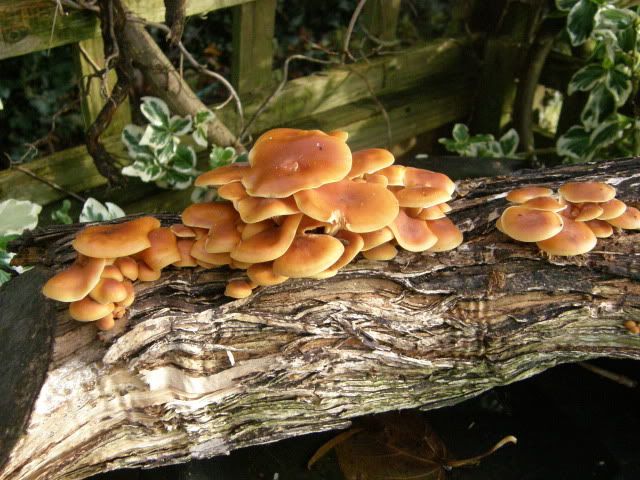 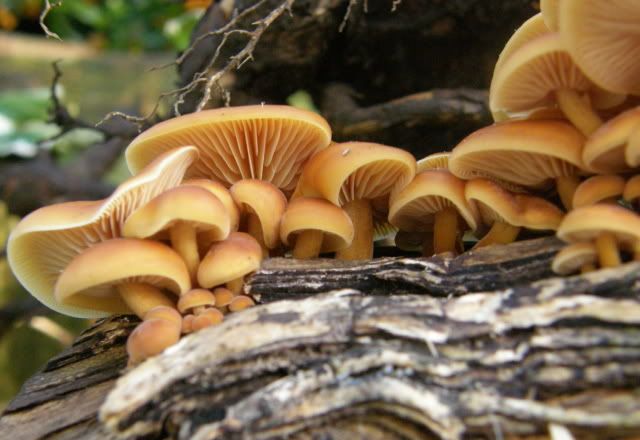 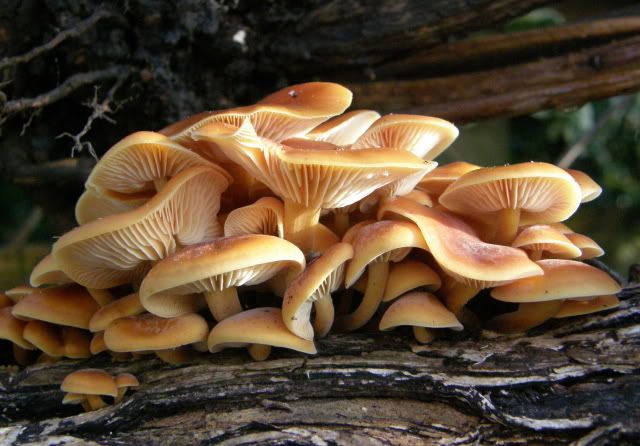 these are most likely the Velvet toughshank - Kuehneromyces mutablis, but they could also be Flammulina velutipes, but would need to see the stems more closely to be sure of which, |
|
|
|
Fungi
Nov 16, 2015 21:46:11 GMT
Post by fungiphile on Nov 16, 2015 21:46:11 GMT
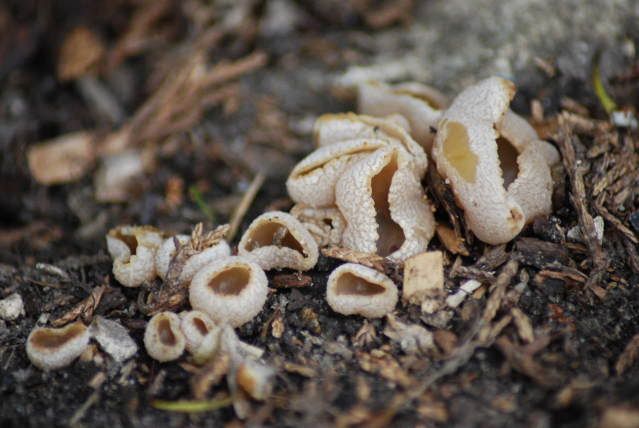 very small fungi about 3cm long, in the wood chip path not my strong point, these cup type fungi, but it may possibly be a Peziza granulosa, |
|
|
|
Fungi
Nov 16, 2015 21:51:41 GMT
Post by fungiphile on Nov 16, 2015 21:51:41 GMT
Just had a look back through all the fungi that have been posted on here, some amazing pics. I found one yesterday while rummageing about in one of the beds, it was growing on and old Laurel stump. My first thought was that it was a lump of melted black plastic, maybe something that I'd burnt and the ashes had been put on the garden. When I picked it up and examined it closer I thought maybe a plant tuber. Don't ask me why but I smelt it and that told me it was Fungi. I don't smell everything I find by the way ;D Been scanning the web and I reckon it's Dead Mans Finger  what a horrid name. I snapped a finger off ;D to see what it was like inside. Looks like it was home for a teenie weenie slug too ;D 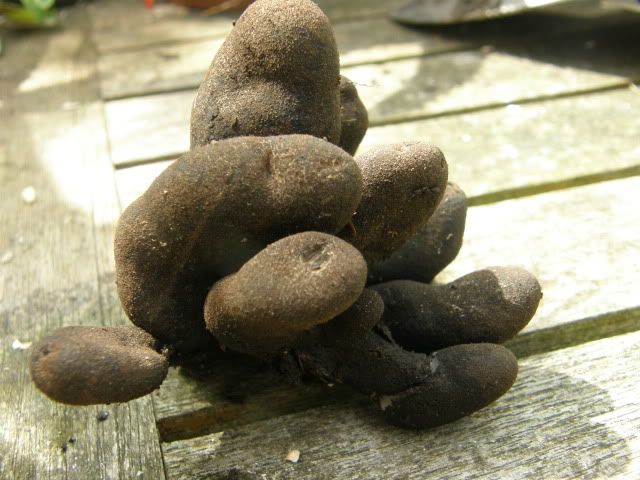 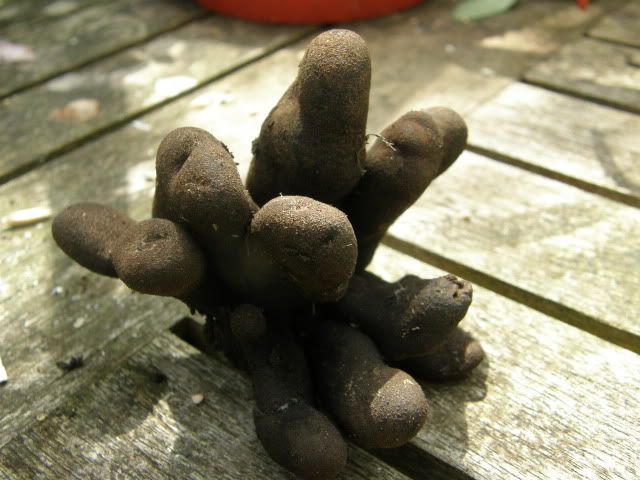 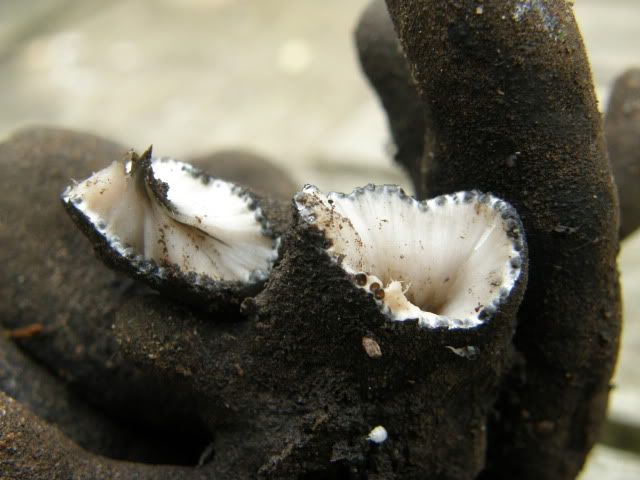 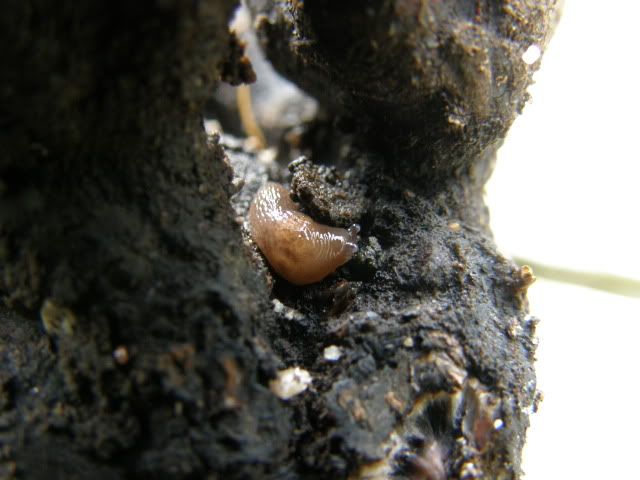 'DMF' eh, Chuck..? Is that classed as edible from your researches - looks like it should be meaty... OM. very definitely not edible !! you are right, they are Dead mans Fingers - Xylaria ploymorpha, which can be confused with Dead Molls fingers - Xylaria longipes, which are usually more slender, |
|
|
|
Fungi
Nov 16, 2015 21:54:49 GMT
Post by fungiphile on Nov 16, 2015 21:54:49 GMT
As we were driving around last week we saw this on a tree.  We have just cycled past it and it is a lot lot lighter now. 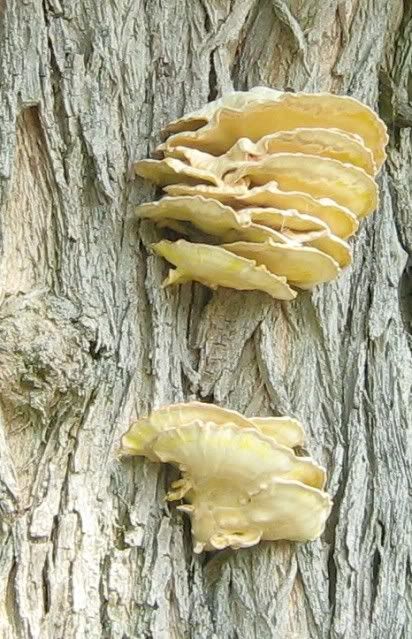 RF this is the Chicken of the woods - Laetiporus sulphureus, they are much more of an orangey yellow when young, becoming lighter with age, finally almost white, and resemble expanded polystyrene, both in look and touch ! |
|
|
|
Fungi
Nov 16, 2015 21:56:48 GMT
Post by fungiphile on Nov 16, 2015 21:56:48 GMT
Found this in a tomato tub this morning...not such a good sign really...  RF most probably Parasola plicatilis, but there are other very similar ones it could be though, |
|
|
|
Fungi
Nov 16, 2015 21:59:01 GMT
Post by fungiphile on Nov 16, 2015 21:59:01 GMT
After the rain comes ... 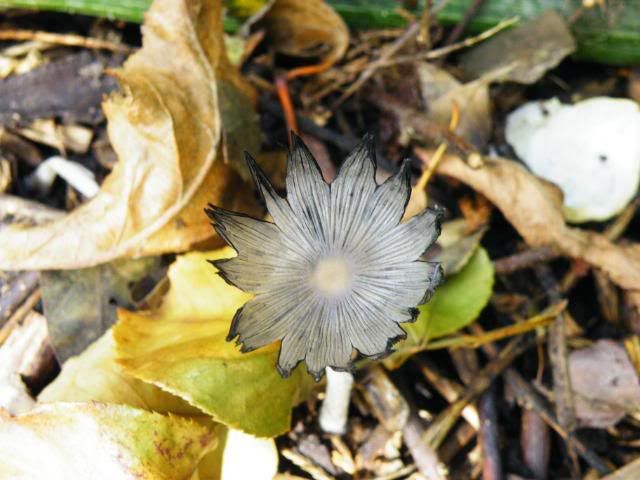 ;D an Inkcap, one of the Coprinopsis species, either lagopides or lagopus or similar |
|
|
|
Fungi
Nov 16, 2015 22:00:46 GMT
Post by fungiphile on Nov 16, 2015 22:00:46 GMT
Went out for a bike ride yesterday, and spotted these growing under a willow tree.  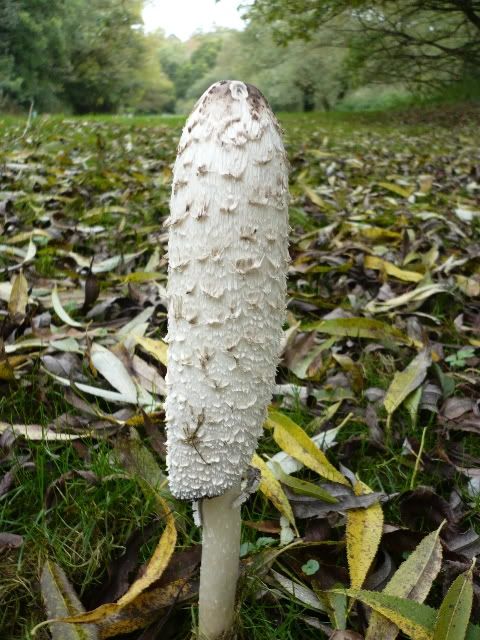 these are Coprinus comatus- Shaggy inkcap or Layers wig, another of the inkcaps, |
|
|
|
Fungi
Nov 16, 2015 22:03:50 GMT
Post by fungiphile on Nov 16, 2015 22:03:50 GMT
Lovely Bagpuss... I have just found these in the garden - no idea what they are but something seems to like the first one... 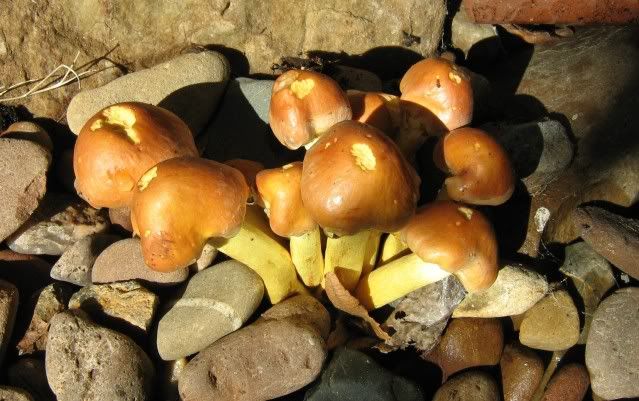 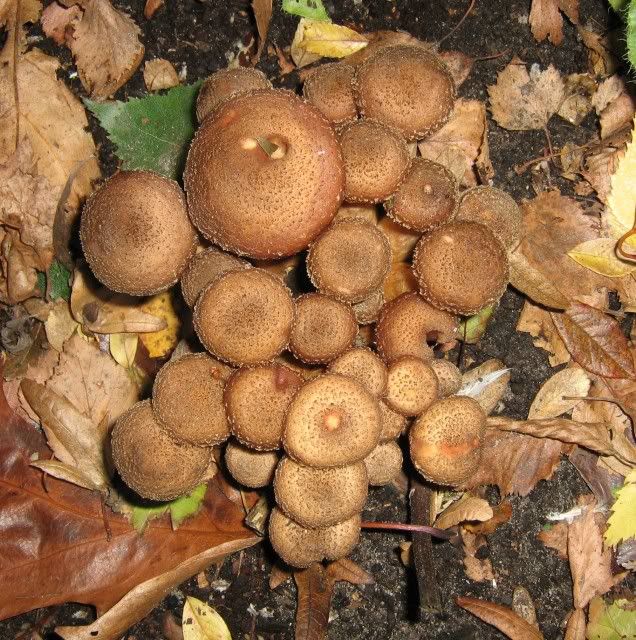 RF would need to see more details such as stem and gills of both of these to be certain, but no1 is probably Sulphur tuft -Hypholoma fasiculare and no2 looks very much like the dreaded Honey Fungus - Armillaria mellea, but as said, cannot be sure with just a view of the caps, |
|
|
|
Fungi
Nov 16, 2015 22:32:52 GMT
Post by fungiphile on Nov 16, 2015 22:32:52 GMT
i cant help but notice that in several posts here regarding fungi, many of you discuss the edibility of many of the fungi posted here, i don't wish to sound alarmist, but you should never eat any wild fungi you find, unless you are absolutely certain that they are indeed edible, as a mistake here could see you having half a day out with the undertaker !! while most fungi, while being poisionous, can make you ill to varying degrees, there a some that are deadly poisionous, with one or two having no cure at all for them if eaten ! these deadly types can very easily be mistaken for some of the edible ones, so you should take great care if picking wild mushrooms to eat, and only then if you are 100% certain they are indeed edible, beware of any identifcations from photographs of fungi (such as the ones on this site and others, including any i have given an id to) as it is very difficult to get a correct id from photographs alone, plus many photos of fungi you can find on a google or similar search have been misidentified and wrongly labelled, so you cannot be certain of an id from these sources, if you like eating fungi, then stick to the supermarket ones, its much safer  ps: i have tried many wild fungi, but still prefer the "chestnut mushrooms" from the supermarket to any of the wild ones  |
|
|
|
Fungi
Nov 17, 2015 8:12:44 GMT
Post by Rosefriend on Nov 17, 2015 8:12:44 GMT
i cant help but notice that in several posts here regarding fungi, many of you discuss the edibility of many of the fungi posted here, i don't wish to sound alarmist, but you should never eat any wild fungi you find, unless you are absolutely certain that they are indeed edible, as a mistake here could see you having half a day out with the undertaker !! while most fungi, while being poisionous, can make you ill to varying degrees, there a some that are deadly poisionous, with one or two having no cure at all for them if eaten ! these deadly types can very easily be mistaken for some of the edible ones, so you should take great care if picking wild mushrooms to eat, and only then if you are 100% certain they are indeed edible, beware of any identifcations from photographs of fungi (such as the ones on this site and others, including any i have given an id to) as it is very difficult to get a correct id from photographs alone, plus many photos of fungi you can find on a google or similar search have been misidentified and wrongly labelled, so you cannot be certain of an id from these sources, if you like eating fungi, then stick to the supermarket ones, its much safer  ps: i have tried many wild fungi, but still prefer the "chestnut mushrooms" from the supermarket to any of the wild ones  Wonderful to be able to put names to some of these beauties...many thanks fungiphile,.. I see what you mean about posting problems - you are posting within the "Quote" marks. When you quote anything you need to post after the last quote mark ([/quote]) and it will be fine. I have send you a message - top of the board to the right, after Bookmarks. Thanks for the warnings fungiphile, collecting wild mushrooms is big buiness on this side on the water ( I live in Germany) and indeed my OH and I did for many years. He was taught by his grandmothers - only 5 varities that he always recognised, although his grandmothers knew and collected many other varities... We loved eating them with bacon, onion and sometimes an egg.. Here in Germany there are deaths every year from people eating poisonous forms and warnings go out each season. There are experts that can be contacted in most areas and you can take your basket of "goodies" to them and they will check through them all before declaring them safe for eating or not...so many it seems are safe once cooked but deadly when raw... |
|
|
|
Fungi
Nov 22, 2015 15:33:45 GMT
Post by fungiphile on Nov 22, 2015 15:33:45 GMT
one of the members from our fungi forum recently posted a list of the various fungi which he had found in his garden over the years, (see here ) and although we have a fair sized garden we never get much in the way of fungi growing in it, so i wondered what other people found in their own gardens in the way of fungi ?, |
|